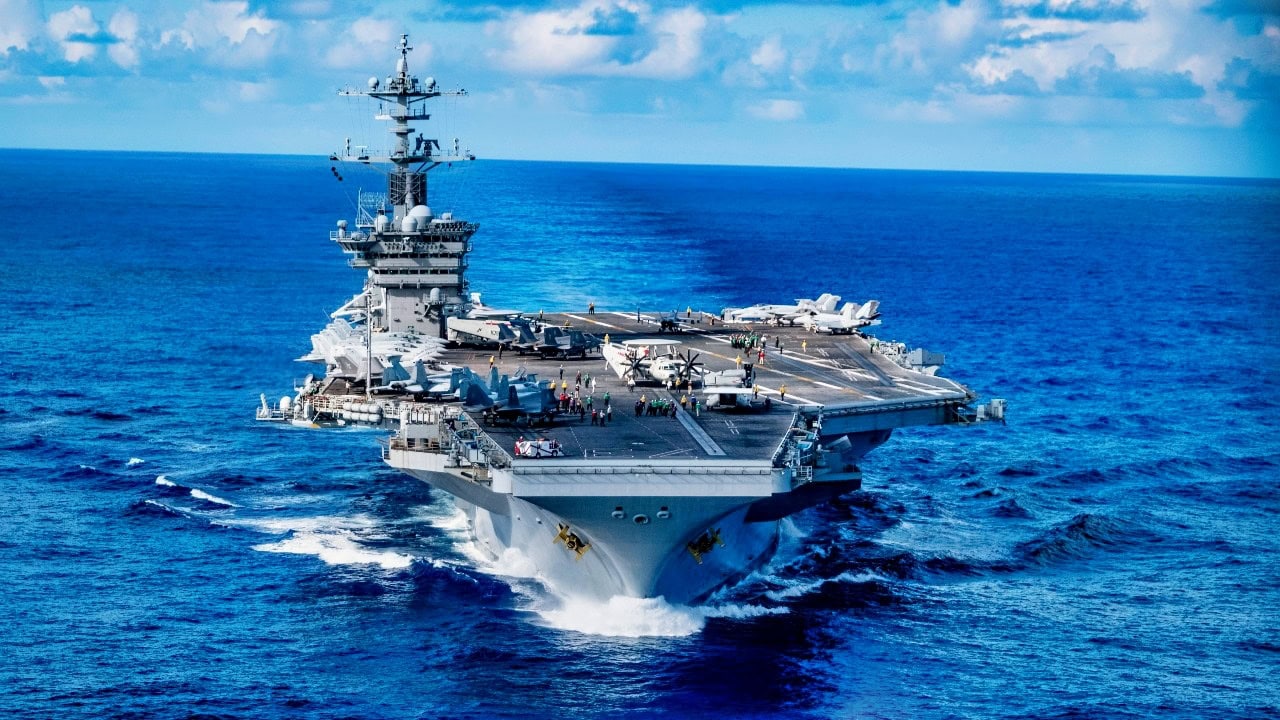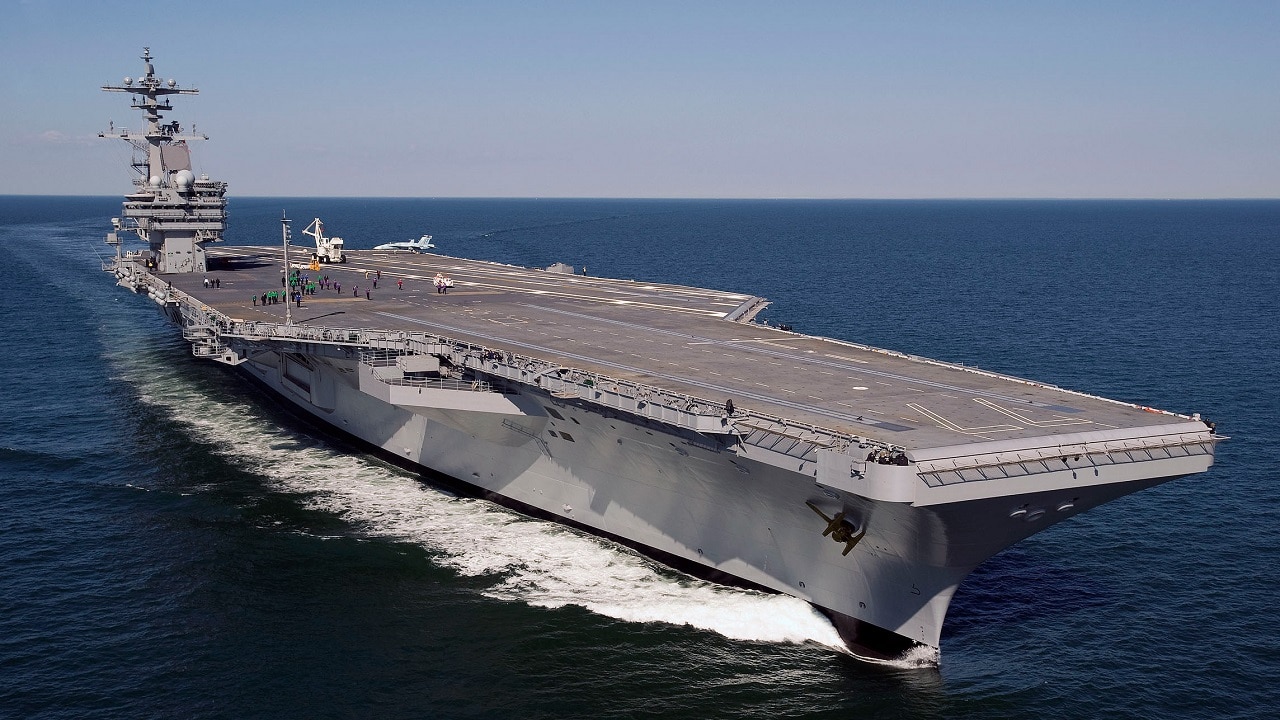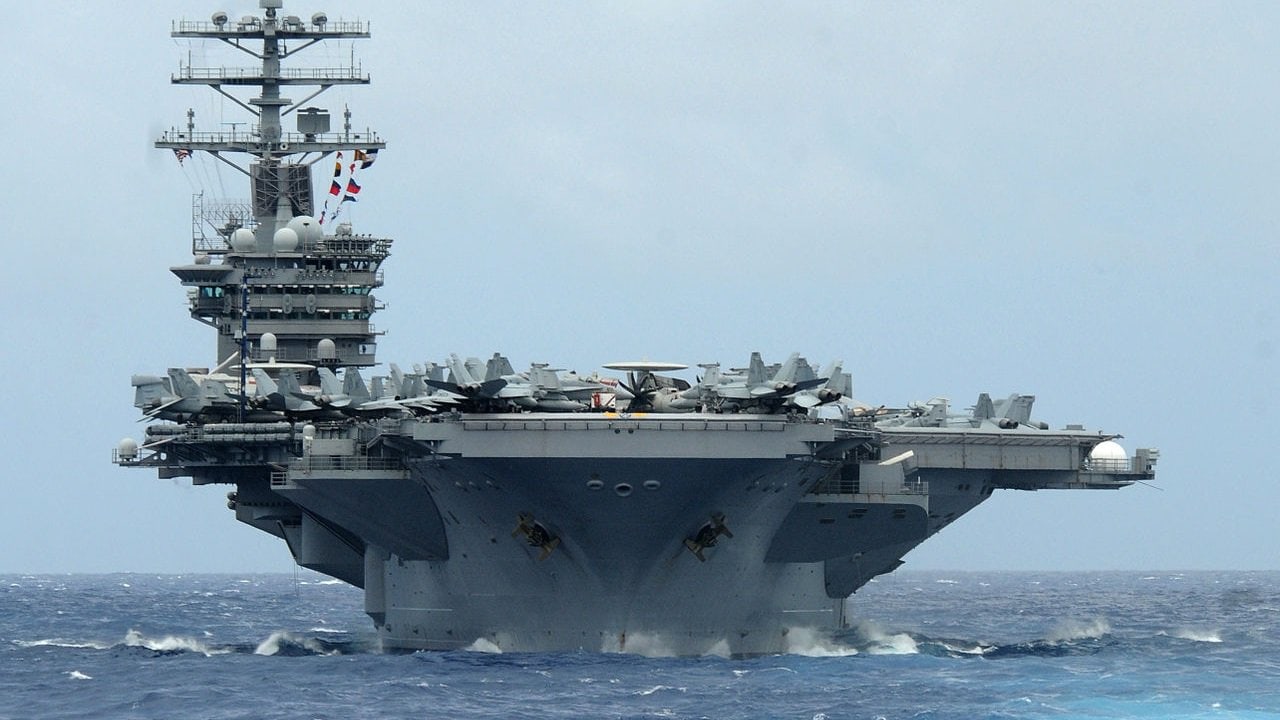
People’s Liberation Army – Navy (PLAN), for the first time, had three aircraft carriers on the ocean
By Kris Osborn, President, Warrior
Earlier in 2024, the People’s Liberation Army – Navy (PLAN), for the first time, had three aircraft carriers on the ocean, as its 3rd and most recent carrier, the Fujian, underwent sea trials.
The PLAN’s first two carriers, the Liaoning and the Shandong, have operated together multiple times to display dual-carrier operations capability.
The arrival of the Fujian introduces the broader question of China’s overall carrier fleet and what the PLAN may need to emerge as a singular dominant global power in the coming years.
Will the PLAN need to rival the U.S. Navy in carrier fleet size to become a dominant global force truly?
What Does China Want In An Aircraft Carrier Fleet?
The Chinese seek to expand beyond being a dominant Pacific power and project global influence as a leading world power in a position to rival the United States Navy with 11 carriers.
There are two clear yet contradictory elements to this; in one sense, China is far from being able to maintain a global presence in any way comparable to the US.
And yet, China is adding new shipyards and building carriers and warships at a staggering pace.
It is unclear how many years the PLAN may take to operate a carrier fleet the size of the U.S. Navy.

U.S. 7th Fleet’s premiere forward-deployed aircraft carrier USS George Washington (CVN 73) steams in the Western Pacific Ocean during Keen Sword 25, Oct. 29. The embarked staff of the George Washington Carrier Strike Group is coordinating air and surface operations in the exercise. Keen Sword is a biennial, joint and bilateral field-training exercise involving U.S. military and Japan Self-Defense Forces personnel, designed to increase readiness and interoperability while strengthening the ironclad U.S.-Japan alliance. (U.S. Navy photo by Mass Communication Specialist 2nd Class Caroline H. Lui)
However, the PLA won’t need 10 carriers to operate as a regional power.
However, it must increase its carrier fleet well beyond three if it plans to continue its fast-expanding global influence.
China’s Naval Expansion
In recent years, the PLA has dramatically increased its global reach into strategically vital areas such as Africa, the Middle East, and South America.
For example, China has built a forward-operating military base near the U.S. military’s facility in Djibouti, located in the Horn of Africa.
Beijing’s one-belt-road initiative seeks to establish access and lines of influence from Western and Southern China into India and the Middle East.
The Pentagon’s annual China report explained that the PLAN is conducting far-sea carrier training operations at further distances off its coast in key areas near the Philippines.
Should China wish to support its growing military presence in certain places, such as the Middle East, or expand its allied relationships, it will need forward-deployed navy power projection.
Global economic, political, and diplomatic power and influence will ultimately need to be reinforced with military presence to establish a lasting presence in support of China’s interests.

The aircraft carrier USS George H. W. Bush (CVN 77) on builder’s trials, 2/13/2009. The ship, named after the nation’s 41st president, is the 10th and final Nimitz-class, nuclear-powered carrier built at Northrop Grumman Shipbuilding-Newport News. Photo by John Whalen, Northrop Grumman Shipbuilding.
U.S. Aircraft Carrier Presence
The ultimate question is one of simultaneous global forward presence because the U.S. can currently project massive Carrier Strike Group air attack campaign power in several places at one time.
U.S. Navy aircraft carriers have protected Israel from the Mediterranean and safeguarded international commercial shipping in the Red Sea while maintaining a significant Carrier Air Wing presence in the Pacific near Taiwan and the South China Sea.
In this way, the U.S. can exert its diplomatic, political, and military influence in support of its interests in multiple key locations at one time.
Should the PLAN wish to maintain its influence and presence in expanded areas such as the Middle East, Europe, Africa, and South America, it must reinforce its political and economic impact in new places with military power.
Otherwise, US and allied deterrence efforts could slow or stop China’s continued expansion to maintain a strong and imposing presence in strategically vital areas.

The aircraft carrier USS Nimitz (CVN 68) is underway during the Great Green Fleet demonstration portion of the Rim of the Pacific (RIMPAC) 2012 exercise. Nimitz took on 200,000 gallons of biofuel in preparation for the Great Green Fleet demonstration during Rim of the Pacific (RIMPAC) 2012. Twenty-two nations, more than 40 ships and submarines, more than 200 aircraft and 25,000 personnel are participating in RIMPAC exercise from June 29 to Aug. 3, in and around the Hawaiian Islands. The world’s largest international maritime exercise, RIMPAC provides a unique training opportunity that helps participants foster and sustain the cooperative relationships that are critical to ensuring the safety of sea lanes and security on the world’s oceans. RIMPAC 2012 is the 23rd exercise in the series that began in 1971. (U.S. Navy photo by Mass Communication Specialist 2nd Class Eva-Marie Ramsaran/Released)
About the Author: Kris Osborn
Kris Osborn is the Military Technology Editor of 19FortyFive and President of Warrior Maven – Center for Military Modernization. Osborn previously served at the Pentagon as a highly qualified expert in the Office of the Assistant Secretary of the Army—Acquisition, Logistics & Technology. Osborn has also worked as an anchor and on-air military specialist at national TV networks. He has appeared as a guest military expert on Fox News, MSNBC, The Military Channel, and The History Channel. He also has a Masters Degree in Comparative Literature from Columbia University.

